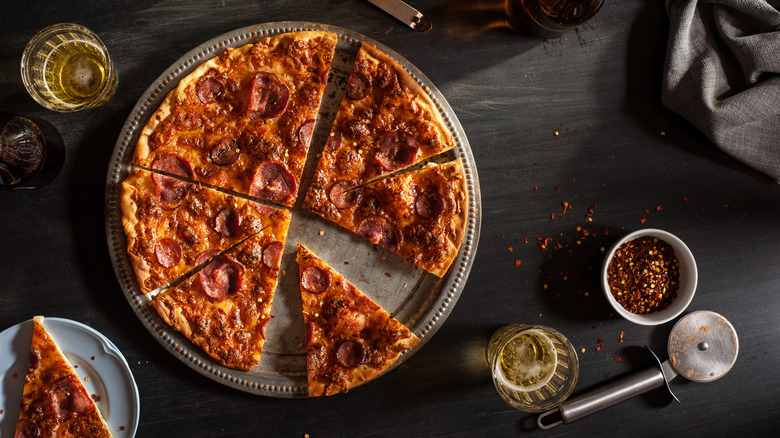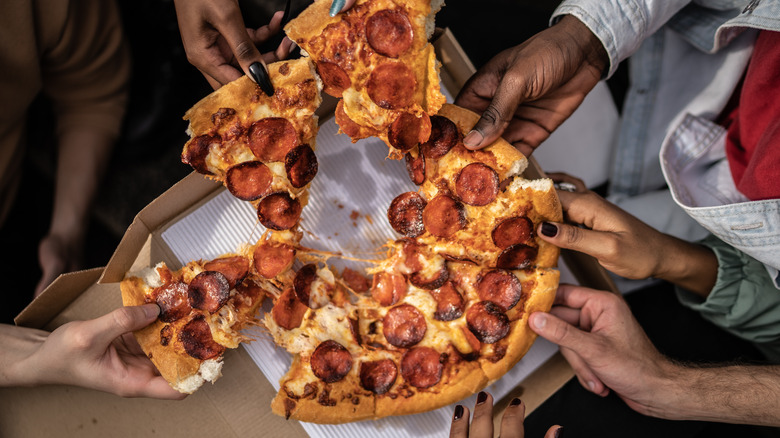The Reason We Put Pepperoni On Pizza
Pepperoni on pizza is about as ubiquitous as peanut butter on jelly or air in your lungs. At this point, the platonic ideal of pizza in the average American's mental picture is likely a yellow circle covered in red dots. But it wasn't always that way. Sicilian pizza is closer to focaccia with tomato sauce than to Americanized pizza, which didn't start gaining traction until the 1950s.
Italian immigrants arrived on U.S. shores en masse (primarily concentrated in New York) during the early 20th century, and they were making do with the ingredients at their disposal as they tried to replicate the dishes they knew and loved from Italy. European culinary traditions met American ingredients, and different pizza toppings were locally available. Capicola (which wasn't as popularly consumed in New York and subsequently took a long time to produce) got swapped out for pepperoni, which could be processed more quickly.
Based on the origins of pepperoni in the U.S., this ethnic ingredient was available only in specialty Italian grocery shops as salame piccante, aka spicy salami. Pepperoni started cropping up in the Italian delis of Lower Manhattan by 1919. When The New York Times first mentioned pizza in 1944, the outlet called it "a pie popular in Southern Italy." Per the lore, pepperoni first entered the pizza realm on the periphery — that is, on charcuterie plates alongside cheeses and pickles. Gradually, foodies started putting it on top of their slices, and it slowly became marketed as "sausage for pizza."
The times they were a-changin'
Unlike many other cured meats, which can take months to process, pepperoni can be ready to serve within one to three weeks. This accessibility is also likely responsible for pepperoni's enduring dominance in pizzerias. Domino's opened in Michigan in 1960, and Pizza Hut opened in Kansas in 1958. Pepperoni's rise to topping stardom coincided with the need for efficiency in multi-location pizza shops. It could be cheaply mass-produced, easily transported, and touted a hardy shelf life. By the early 1980s, Ezzo's grocery in Canastota, New York, was the first shop (or among the first) to start selling pepperoni pre-sliced. Modern pepperoni was taking form: beef and pork flavored with spices, fermented, and dried. Pepperoni pizza mania had officially begun.
Nowadays, roughly three billion pizzas are consumed in the U.S. every year (about 46 slices per person). And while there are plenty of gourmet toppings to upgrade your pizza, pepperoni is still the No. 1 favorite in America, with a whopping 64% of respondents in a 2021 YouGov poll naming it as their go-to. Still, pepperoni has yet to catch on with quite as much fervor in present-day Italy. Aurally, "pepperoni" sounds like "peperoni," the Italian word for bell peppers — not meat at all. In Italy, if pepperoni is used to top pizzas, it's used sparingly, taking a backseat to high-quality sauce and crust. Ordering "pizza alla diavola" en Italia is your closest bet to replicating the topping you'll find (everywhere) in America.

